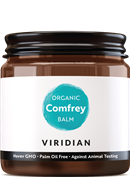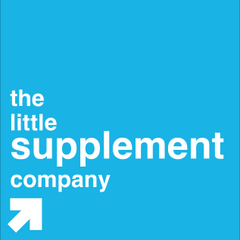
Viridian Organic Comfrey Balm 60ml
What does Comfrey COMFREY LEAF and ROOT Balm do?
Organic Comfrey Balm is a renewing salve formulated with skin nourishing oils and plant extracts to support the body’s own regeneration.
All of the Viridian balms are produced and packaged on an organic farm in England. The plants are all grown from hand-sown seeds in spring, and then hand-picked at the end of summer as part of a slow and delicate process that preserves the integrity of each plant. After gently drying the flowers and herbs, they are carefully steeped in oil to lock in the very best herbal benefits. Small batches are then blended with other therapeutic ingredients to create luxurious balms. Hand crafted with time and care, every balm follows the pace of nature.
Our range of balms have all been certified organic by the Soil Association - better for the planet, better for you.
| Ingredient | Weight | %EC NRV |
|---|---|---|
| Helianthus annuus seed oil | ||
| Simmondsia chinensis seed oil | ||
| Cera flava | ||
| Butyrospermum parkii | ||
| Symphytum sp. Extract | ||
| Rosmarinus extract | ||
| Lavandula angustifolia oil | ||
| Limonene & Linalool | ||
| Common names of ingredients listed above: organic sunflower oil, organic jojoba oil, organic beeswax, organic shea butter, organic comfrey extract, organic rosemary extract, organic lavender oil, organic limonene & linalool are components of lavender oil |
